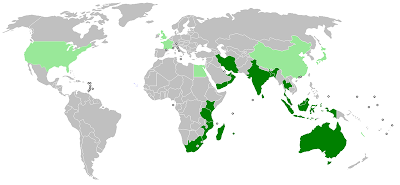Motto: "Fear God and honour the Queen"
Capital: Suva
Currency: Currency Fijian dollar (FJD)
Official languages: English, Fijian, Fiji Hindi
| English | Hello/hi | Good morning | Goodbye |
|---|
| Fijian | bula | yadra (Pronounced Yandra) | moce (Pronounced Mothe) |
|---|
| Fiji Hindi | नमस्ते (namaste) | सुप्रभात (suprobhat) | चलता हूँ (Chaltha hu) |
|---|
Independence
- from the United Kingdom 10 October 1970
- Republic 07 October 1987
Population (2012 estimate): 8.5 lakhs
Religion: 40% are Christian.Among Indo-Fijians, most are Hindu or Muslim while a small minority are Christian.
Sports: Rugby Union is the most-popular team sport played in Fiji.
Population Composition: Indo-Fijians (38.1%) - descendants of Indian contract labourers brought to the islands by the British colonial powers in the 19th century.
Politics: Since independence there have been four coups in Fiji. The military has been either ruling directly or heavily influencing governments since 1987.
Interesting Facts:
Constant warfare and cannibalism between warring tribes were quite rampant and very much part of everyday life. During the 19th century, Ratu Udre Udre is said to have consumed 872 people and to have made a pile of stones to record his achievement. Fijians today regard those times as "na gauna ni tevoro" (time of the devil). The ferocity of the cannibal lifestyle deterred European sailors from going near Fijian waters, giving Fiji the name Cannibal Isles; as a result, Fiji remained unknown to the rest of the world.



















